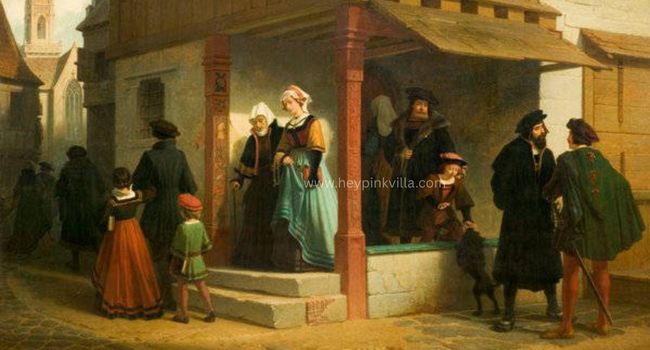I still remember standing in front of a 16th-century clothing doublet displayed at a history museum. The embroidery was delicate, the fabric heavy, and I thought to myself, “Who could possibly wear this every day?” That moment reminded me that 16th century clothing was more than fashion. It expressed power, rank, and identity in a society shaped by royalty, religion, and strict class rules.
What Did They Wear in the 16th Century?
So, what did they wear in the 16th century? The answer depends on class. Nobles wore silk, velvet, fur, and lace. Outfits were layered—men in doublets, hose, and cloaks; women in gowns with stiff bodices and wide skirts. Bright colors, jewels, and embroidery showcased wealth.
Poorer families lived differently. They chose linen, wool, and leather. Clothes were practical and hard-wearing because survival came before beauty. Still, even simple farming clothes followed the shape of fashion trends, just made with cheaper fabrics.
What Did Normal People Wear in the 1600s?
You may wonder, what did normal people wear in the 1600s? Well, clothing didn’t change overnight from one century to the next. At the tail end of the 1500s, ordinary people wore wool tunics, plain gowns, aprons, and simple caps. They repaired garments, reused fabric, and passed clothes down through generations.
When I tried on a plain linen shift during a reenactment, I noticed how light but scratchy it felt. It wasn’t glamorous, but it kept me cooler than expected under summer heat. That gave me a small glimpse of what everyday survival dressing was like.
What Is the Oldest Piece of Clothing?
Talking about history always sparks another question: what is the oldest piece of clothing known? Archeologists have discovered ancient garments older than the 16th century by thousands of years. One example is the Tarkhan dress from Egypt, about 5,000 years old.
Now, connect that with 16th century clothing. While Egyptian linen was about functionality, Renaissance clothing represented status. It is fascinating to see how clothing evolved—from survival gear into something symbolic of identity and culture.
What Defined 1600s Fashion?
So, what defined 1600s fashion after the 16th century? The trends of the 1500s shaped the early 1600s directly. By then, ruffs around the neck grew stiffer. Male doublets became longer, and women’s gowns began shifting toward simpler silhouettes. The Elizabethan love of flair carried into the early Jacobean period.
This shows that 16th century clothing left a deep legacy. The bold shoulders, embroidery, and strong lines of the Renaissance influenced European wardrobes for decades. From royalty to commoners, everyone’s dress carried echoes of the 1500s.
Style and Symbolism in 16th Century Outfits
What fascinates me most about 16th century clothing is how symbolic it was. Sumptuary laws controlled what people could wear. Scarlet, silk, or ermine were reserved for nobles and royalty. If you saw someone in plain brown or gray, you immediately knew their position in life.
In fact, clothing itself was like a language back then. For example, a gentleman’s codpiece wasn’t only a garment—it showed masculinity and wealth. Similarly, women’s stiff bodices forced upright posture, symbolizing discipline and elegance.
Human Experience of Clothing
From my perspective, looking at portraits from the 1500s is like scrolling through an Instagram feed of the past. You see people posing in the best clothing they owned. Heavy fabrics, bright dyes, and stiff collars were not just fashion—they were tools to impress. But under those luxurious layers, everyday comfort was rare.
Whenever I dress in modern lightweight clothes, I can’t help but reflect on how far we’ve come from the restrictions of the Renaissance wardrobe. Honestly, I don’t think I’d last an hour in a full velvet gown under the summer sun.
Final Thoughts
16th century clothing was dramatic, symbolic, and deeply tied to class. Nobles embraced silks, velvets, and jewels. Ordinary people wore linen, wool, or hand-me-downs. Every layer reflected wealth, work, or survival.
From the stiff ruffs of royalty to the patched tunics of poor farmers, clothing was more than fabric—it was identity. Next time you look at a painting from the Renaissance, notice the details. Behind every embroidered sleeve or wool tunic lies a story of status, power, and human resilience stitched into the seams.
